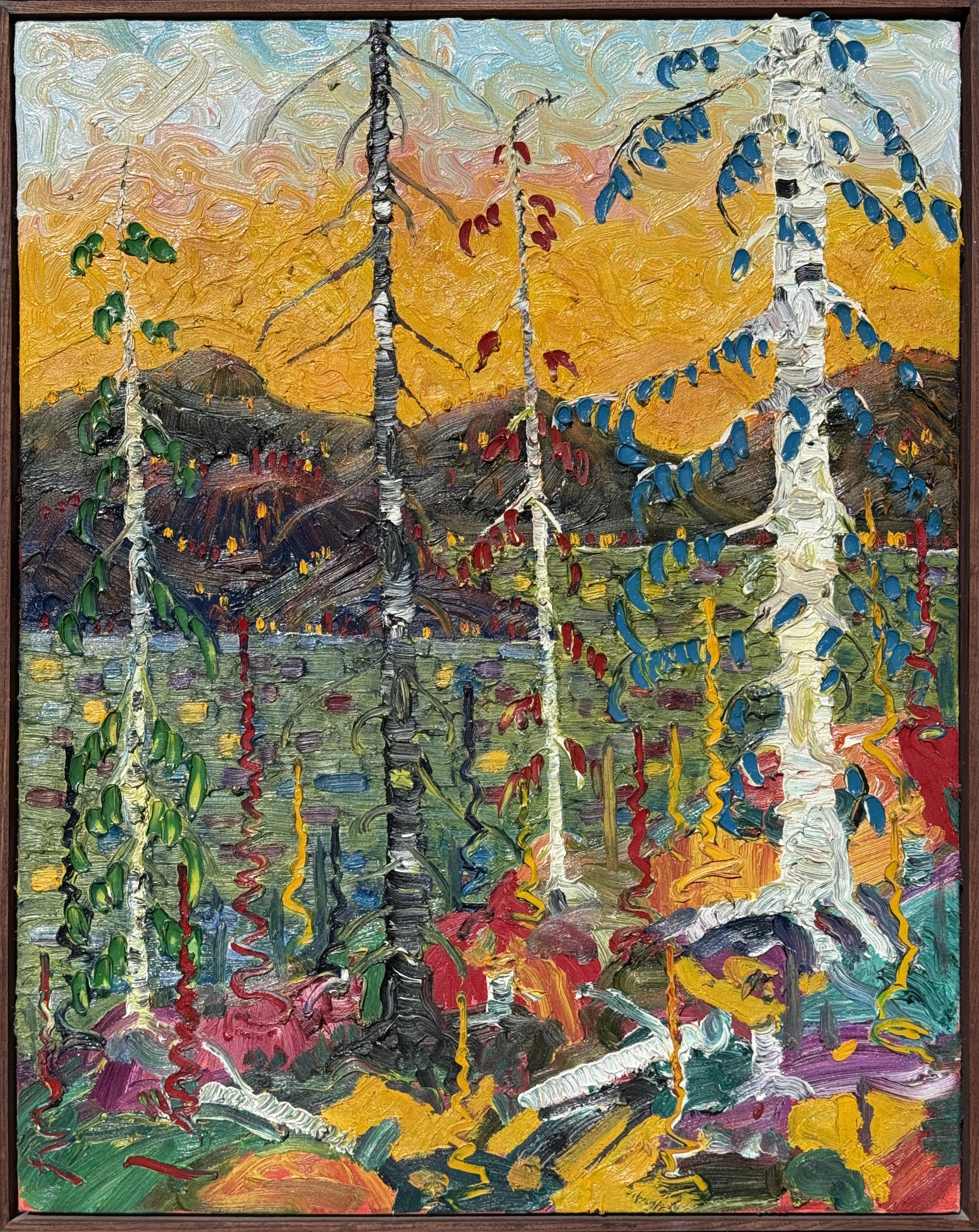
Alex Cameron’s style blends vibrant abstraction with lyrical landscape, using thick impasto and dynamic colour to create compositions that hover between memory, emotion, and place.
Alex Cameron (1947–2025)
Alex Cameron was one of Canada’s most distinguished contemporary painters, celebrated for his radiant abstract landscapes and bold, impasto-rich compositions. Over a career that spanned more than five decades, Cameron developed a singular visual language that merged lyrical abstraction with echoes of the Canadian wilderness, producing works that pulse with rhythm, colour, and emotional depth.
Born in Parry Sound, Ontario in 1947 and raised in the scenic Georgian Bay area, Cameron was steeped in art from an early age. His mother was a painter, and a formative visit to his uncle, a designer in New York City, introduced him to the American Abstract Expressionist movement. Returning to Toronto, he studied at the New School of Art under notable modernists including Graham Coughtry, Gordon Rayner, Dennis Burton, and Robert Markle. During this time, he also formed a lasting friendship with art critic Clement Greenberg, and worked as studio assistant to Jack Bush from 1972 to 1976—an experience that left an enduring impact on his approach to colour and form.
Cameron’s early works explored flat planes and cartoon-like linework, evolving by the 1980s into the highly textured, spatially dynamic compositions that would become his hallmark. By layering finger-width squiggles and dashes of thick oil paint directly from the tube, he built up complex surfaces that blur the line between abstraction and representation. He painted from memory, never photographs, and translated impressions of the Canadian landscape—often gathered during extensive travels to the Yukon, British Columbia, Newfoundland, and the Northwest Territories—into luminous, imaginative terrains.
Throughout his life, Cameron exhibited widely, with over 40 solo shows to his name. His first was at A Space Gallery in 1971. He was featured in prestigious group exhibitions including Four Toronto Painters at the Art Gallery of Ontario (1976) and 14 Canadians at the Hirshhorn Museum in Washington, D.C. (1977). In 1985, the Robert McLaughlin Gallery mounted Alex Cameron: In Mid-Career, a major retrospective. His work is held in numerous public collections, including the Art Gallery of Ontario, the Art Gallery of Hamilton, the Robert McLaughlin Gallery, and the Agnes Etherington Art Centre, as well as in hundreds of private and corporate collections—among them the Office of the Prime Minister of Canada and Her Majesty Queen Elizabeth II, who was gifted one of his paintings during her Silver Jubilee visit to Canada.
Outside of painting, Cameron was a passionate motorcycle racing enthusiast. From 1975 to 1987, he served as mechanic and tuner for Miles Baldwin, one of North America’s top Formula 1 and 2 road racers. The pair shared an intense, focused drive that paralleled Cameron’s dedication in the studio.
Despite health challenges later in life—including a debilitating stroke in 2012—Cameron remained fiercely committed to his practice. Unable to use his dominant hand, he taught himself to paint with his left. Though speech became difficult, his expressive spirit and trademark smile never dimmed.
Cameron’s final painting, Big Dipper, remained on his easel on the morning of June 4, 2025, when he suffered a fall near his Toronto studio. He passed away on June 17, surrounded by family and with his beloved wife, Lorna Hawrysh, holding his hand.
His work continues to resonate deeply with collectors and audiences, offering not only visual impact but a lasting emotional connection. As Cameron once said, “The essence of a painting for me is the same as the essence of a poem. The light of the canvas pours into the eye; it is a poem of vision. A painting must be an experience for me that points the way toward a clarity of mind.”
For details and images, please contact us.

Alex Cameron Orange Crimson Bliss, 2004 oil on canvas (framed) 38" x 30" $8,500.00
